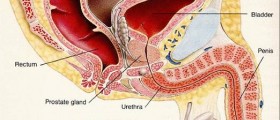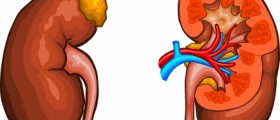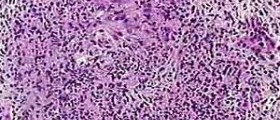Decreases Urine Output
Decreased urine output is medically known as oliguria. It is a symptom of a variety of medical conditions, and it is most commonly related to dehydration, renal failure, obstruction in the urinary tract, and hypovolemic shock. Oliguria may also be one of the symptoms of organ dysfunction syndrome. No matter what the underlying cause is, these symptoms have to be taken very seriously, and the cause needs to be established as soon as possible.
Oliguria refers to the input of urine lower than 400mL per day in adults. In infants, oliguria occurs if the output of urine is less than 1mL/kg/hour, and children whose urine output is less than 0.5mL/kg/ hour are classified as oliguric.

Causes of Decreases Urine Output
The leading cause of decreased urine output is dehydration. Low intake of water or increased perspiration most commonly results in dehydration and consequent oliguria. Dehydration also accompanies diarrhea, vomiting, and fever. In acute renal failure, improper functioning of the excretory system leads to inadequate absorption of water and results in decreased urine output.
Other causes of oliguria are low cardiac output, hypovolemia, and vascular collapse. If there is not enough water in the body, the kidneys will not excrete water. Instead, the absorption of water will increase, and this causes oliguria.
Even certain medications may interfere with urine output. They include immunosuppressants, chemotherapeutics, and some antibiotics.
In men, an enlarged prostate can decrease the elimination of urine. Even urinary obstruction caused by stones or tumors may cause decreased urine output.
And finally, oliguria may be one of numerous postoperative complications.
Diagnostic Tests for Decreased Urine Output
People who notice they are not urinating enough or if they suffer from additional symptoms are supposed to visit their doctors. If the doctor wants to test urine output and search for the underlying cause of this condition he/ she will perform certain tests.
The patient may be inserted with a catheter, and the urine can collect in the bag so that the doctor has perfect insight into the amount of the excreted urine. Blood tests may point to the presence of urinary infection and renal failure, which may be responsible for oliguria. Urine analysis is routinely performed.
It can show the presence of leukocytes, red blood cells, or proteins. Furthermore, a urine culture may isolate bacteria and confirm kidney or bladder infection. Ultrasound of the kidneys may visualize obstruction and give insight into the structure of the urinary tract. Additional testing includes a CT scan, intravenous pyelogram, or cystoscopy.
If the doctor suspects other causes besides those which originate from the urinary tract s/he will perform additional tests.
Treatment for Decreased Urinary Output
The treatment for this condition depends on the actual cause. If medications cause oliguria, they are discontinued. In dehydration, patients are either given fluids orally or intravenously. If the underlying cause is renal failure, patients must undergo dialysis. Obstruction of the urinary tract is most commonly treated surgically.
- Patients with sepsis were studied retrospectively based on the Medical Information Mart for Intensive Care IV. Latent growth mixture modeling was used to classify the trajectory of urine output changes within 24 h of sepsis diagnosis.
- The outcome of this study is AKI that occurs 24 h after sepsis. Cox proportional hazard model, Fine–Gray subdistribution proportional hazard model, and doubly robust estimation method were used to explore the risk of AKI in patients with different trajectory classes.
- A total of 9869 sepsis patients were included in this study, and their 24-h urine output trajectories were divided into five classes. The Cox proportional hazard model showed that compared with class 1, the HR (95% CI) values for classes 3, 4, and 5 were 1.460 (1.137–1.875), 1.532 (1.197–1.961), and 2.232 (1.795–2.774), respectively. Competing risk model and doubly robust estimation methods reached similar results.



_f_280x120.jpg)













Your thoughts on this
Loading...